
Guests
- Tom Haydenlongtime activist and former California state senator. He was one of the founders of Students for a Democratic Society. In 1962, he was the principal author of the Port Huron Statement, the founding statement of SDS.
We speak with Tom Hayden, principal author of the Port Huron Statement 50 years ago, the founding document of Students for a Democratic Society (SDS). The Statement advocated for participatory democracy and helped launch the student movement of the 1960s. Tens of thousands of copies of the 25,000-word document were printed in booklet form. “It must have been something in the air, something blowing in the wind, and we wanted to write an agenda for our generation,” Hayden says. The youth-led movement changed the very language of politics, and its impact is still being felt today. “The logic of an occupation, I think, is if you feel voiceless about a burning issue of great, great importance, and the institutions have failed you, the only way to get leverage for your voice is to occupy their space in order to get their attention,” Hayden says. “This goes way back to occupations of factories in the ’30s. … Occupy Wall Street is only the latest stage.” [includes rush transcript]
Transcript
JUAN GONZALEZ: Well, today we look at the birth of an earlier political movement, known by three short letters. This youth-led movement changed the very language of politics, and its impact is still being felt today. It might sound like a description of Occupy Wall Street, but over two generations ago, growing out of a very similar demand for change, emerged SDS, or the Students for a Democratic Society.
This year marks the 50th anniversary of the signing of the 1962 Port Huron Statement, the founding document of SDS. The Statement advocated for participatory democracy and helped launch the student movement of the 1960s. Tens of thousands of copies of the 25,000-word document were printed in booklet form.
AMY GOODMAN: The Statement began with this famous line: quote, “We are people of this generation, bred in at least modest comfort, housed now in universities, looking uncomfortably to the world we inherit.” It ended with these words: quote, “If we appear to seek the unattainable, it has been said, then let it be known that we do so to avoid the unimaginable.”
We’re joined by Tom Hayden, one of the founders of SDS, principal author of the Port Huron Statement. Tom Hayden has been deeply involved in social movements for the past half a century. He was a Freedom Rider in the Deep South, helped create a national poor people’s campaign for jobs and empowerment in the early '60s, helped lead the anti-Vietnam War movement, and was indicted with seven others after the 1968 Chicago Democratic Convention. In 1982, he was elected to the California State Assembly. He now runs the Peace and Justice Resource Center, and he's written a cover story for The Nation magazine called “Participatory Democracy: From Port Huron to Occupy Wall Street.”
Tom Hayden, welcome back to Democracy Now!
TOM HAYDEN: It’s an honor to be here. Good morning.
AMY GOODMAN: Well, it was quite something to go down last night, near midnight, to this New York Stock Exchange. And it’s interesting, because in the ground it says something like, “In 1903, this building, the original Stock Exchange, occupied this space.” And right across the street are scores of people who are, well, doing what they did in Zuccotti Park.
TOM HAYDEN: Very good.
AMY GOODMAN: You write about the early movement, and you write about today, the significance of the power of these movements. Talk about where you were in 1960, 1961, when you wrote the Port Huron document.
TOM HAYDEN: I was the editor of the Michigan Daily in Ann Arbor. I had read “Howl” by Allen Ginsberg and On the Road by Jack Kerouac, and I was a big fan of James Dean and Rebels Without a Cause and looking for my cause. And I met the young black students from the Student Nonviolent Coordinating Committee, and I fell in love with them. And it was because the—they were the alternative to the life of apathetic absurdity that faced those of us like myself, and they were doing something that they believed in at the risk of their own lives and careers and reputations. And I had never met people who were willing to make that risk. And that was it.
I was gradually converted to becoming an activist. It was not an overnight Saint Paul kind of conversion; it was slow. But I came to realize, just as I think Juan did, that you can be a writer, a journalist, an autonomous person, and be deeply engaged and not a propagandist. You begin to see things, see realities, by being involved.
AMY GOODMAN: So, how did Port Huron happen?
TOM HAYDEN: I don’t know. It was a—
AMY GOODMAN: Why is it even called “Port Huron”?
TOM HAYDEN: It was a miracle. It’s like “how did Democracy Now! happen?” A few people said—it must have been something in the air, something blowing in the wind, and we wanted to write an agenda for our generation. And 50 or 60 people did, and very inspired by SNCC. The first notes toward it were written by myself in an Albany, Georgia, jail after a Freedom Ride. Some of the SNCC people came. They were trying to recruit us. And we wanted to do something about the lack of student power. Students couldn’t vote. We could be drafted. There were dorm hours. People would make out with their dates, but there were dorm counselors that made everybody have “two couples, three legs on the floor, please.” I have to set the timing of this: 1960, ’62, a very special time.
So, we decided we would write this manifesto. And a professor named Arnold Kaufman suggested we use the term “participatory democracy.” It also came from Ms. Ella Baker, who was the elder adviser to SNCC, who wanted the students in the South to have an autonomous movement, bottom-up movement, a self-determined movement, and not just follow the elder clergy. And the components came together, and the Statement was somehow produced. And it was called a living document, because we thought it should be open to revision. The sentence you read that opened it is not exactly The Communist Manifesto. You know, it’s like we’re people of this generation, bred in modest comfort, looking uncomfortably.
And so, we’re having a meeting at NYU, that everybody is invited to, all day today, a reflection. Many of the originals are there.
JUAN GONZALEZ: And if you could talk about—
TOM HAYDEN: And we’re looking uncomfortably on the world we leave behind, perhaps, but—
JUAN GONZALEZ: Yeah.
TOM HAYDEN: Occupy makes us all very happy, very pleased. We’ve seen this come before and go, and come again. And it will.
JUAN GONZALEZ: Tom, when you talk about some of the people who participated, talk about some of those early founders of SDS that were with you and that helped to develop the original Port Huron Statement.
TOM HAYDEN: I can’t name them all, and I’d hate to leave anybody out. But they’re all at NYU. They’re not relics. You can go see them. You should—you know some of them. Al Haber was the man carrying the idea of a student organization around. He was like the elder of the group. Robb Burlage, who I had dinner with last night, was a editor at the University of Texas newspaper. My first wife, Casey, was a sit-in leader and a kind of existentialist from Austin. There were student body presidents, student newspaper editors. SNCC people were there. Charles McDew, who’s here in New York, was there. It’s an interesting cross-section of about 50 people. That’s all.
AMY GOODMAN: I wanted to go to a clip of you speaking in the early '60s. You're talking about Bob Moses being arrested for registering African-American voters. Bob Moses was the field secretary for SNCC, for the Student Nonviolent Coordinating Committee, and director of SNCC’s Mississippi Project.
TOM HAYDEN: Middle of August, when Bob Moses was arrested on his way back from Liberty, which is the county seat, ironically enough, of Amite County, he was stopped with several Negros who had just attempted to register unsuccessfully. And he was arrested by the officer, by the marshal, for disturbing an officer in the process of—in position of making an arrest, which essentially means resisting arrest. He was booked, and he spent a couple of days in jail.
AMY GOODMAN: That was Tom Hayden in 1961. I want to go back to the Pacifica Radio Archive. Again, this is Tom Hayden in the early '60s, 1961. Tom, you're helping the Student Nonviolent Coordinating Committee in Durham, North Carolina. In this clip, you continue to talk about the importance of voter registration.
TOM HAYDEN: For a series of reasons, the individuals in the Student Nonviolent Coordinating Committee have come to see voter registration as the kind of issue and the kind of goal that now is not only possible, but also very desirable, in many areas of the South, and the sort of thing that can complement a program of nonviolent direct action.
AMY GOODMAN: That’s Tom Hayden. Thanks to the Pacifica Radio Archive, we hear you 50 years ago. Voter rights is a key issue, even today, even close to 50 years after the signing of the Voting Rights Act, with voter ID laws—
TOM HAYDEN: Exactly.
AMY GOODMAN: —being passed around the country that are cutting back on people’s ability to vote.
TOM HAYDEN: Exactly. Well, the movement began with sit-ins, which were occupations of lunch counters. I was a Freedom Rider. I occupied a train from Atlanta to Albany, Georgia. But very swiftly, the organizers kept hearing from, particularly elderly people, black people in the South, “I want to vote before I die. I served in Korea. I want, just once, to be able to vote.” And the principle was to help people accomplish what they already wanted to do. And there was a strategy also because the disenfranchisement of all these people was the power foundation on which the Dixiecrats, the white racist wing of the Democratic Party that dominated all the committees, was based upon. And so, it was not an accident that these projects occurred in McComb, Mississippi, or in Lowndes County, Alabama, or Albany, Georgia. And they weren’t—it wasn’t an either/or of direct action or voter registration, because the vote was a real threat to the status quo.
And SNCC people made virtually a blood oath to spend at least five years—nobody knew who would live and who would not—but to attack this problem. And it took great courage and—but also strategic intelligence, listening to people who had been waiting for all these years. And it resulted in the Voting Rights Act of 1965, which, fortunately, had some teeth. That’s why the right wing is complaining today, and the Confederate states are complaining, because they’re still under a monitoring provision of the 1965 act. So, in a sense, SNCC accomplished that. I remember I was at a SNCC reunion, 50th, last year, year before. And the attorney general of the United States, Holder, was there, and he gave a talk, and he said, “You know, there’s a straight line between those projects in the Deep South and where I sit today at the Department of Justice. And I owe it to SNCC.”
JUAN GONZALEZ: But, Tom, there’s also another straight line, which is that, obviously, that Voting Rights Act and then the protests that occurred against the war in Vietnam led as well to the mass defections from the Democratic Party of so many Southern whites and, of course, the Nixon strategy in ’68 to basically woo the South, the Republican Party, woo Southern Democrats away, and that really made a major shift in the political alignment in the country for a generation.
TOM HAYDEN: I think—I think, Juan, that was a failure of the Liberal Democrats. The plan was this: risk your neck to do the voter registration and, in doing so, awaken a liberal constituency of clergy, of labor, of like-minded people around the country, and, yes, get the white racists out of the Democratic Party base, move them to wherever they want to go: the Klan, the Republican Party, whatever.
AMY GOODMAN: Or change them?
TOM HAYDEN: I don’t remember that being part of the plan. They’re entitled to their role. The plan was to replace them with progressive forces and realign the Democratic Party. And the failure, the absolute turning point, came where—1964, everything had happened. Kennedy had been assassinated, and SNCC launched the Mississippi Freedom Summer. I went into a long-term community organizing project in Newark—
JUAN GONZALEZ: In Newark, yeah.
TOM HAYDEN: —with 200 other SDS people. The idea was an interracial or a multiracial movement of the poor to galvanize everybody else. We did not anticipate the war in Vietnam and the draft and the polarization. But the idea was that—I think if Johnson had stayed out of the war, you could have accomplished that without the right-wing strategy that followed. It was the right-wing response to the draft resistance, the black uprisings and all that between ’65, ’67, that made it possible to have another realignment that favored the rising Republican Party, which is now the Tea Party.
AMY GOODMAN: Tom Hayden, we’re going to break, come back to this discussion. Tom Hayden, longtime activist, former California state senator, one of the founding founders of Students for a Democratic Society and principal author of the Port Huron Statement, written 50 years ago. This is Democracy Now! Back in less than a minute.
[break]
AMY GOODMAN: Our guest is longtime activist Tom Hayden on this 50th anniversary of the founding of—well, founding of SDS, but the writing of the Port Huron Statement. And Tom Hayden was the principal author of that. We’re talking the early ’60s. This is the time—
TOM HAYDEN: It’s got to be remembered.
AMY GOODMAN: —of John Kennedy. Let’s talk about some parallels between organizing in the age of Obama and organizing in the age of John Kennedy. He was not exactly your enemy. How did people organize? And then, what happened when he was gone?
TOM HAYDEN: It’s a good question, and there are parallels. I think, in short, the movement thought that we needed federal protection. And the problem with the federal government was that the Democrats in power had a power base that included liberals, but it also included the Dixiecrat, right-wing, racist element that prevented anything from happening. And I guess we thought, or gambled, that through direct action and voter registration we would make them choose.
And so, we saw Kennedy, I think, evolve a little bit. There’s dispute about this, but I think he evolved in three years towards more sympathy for the March on Washington, which he initially was worried about because he didn’t want to offend the Dixiecrats—march for jobs and justice, not just for voting rights. It was a big deal. It was one year after Port Huron. And he also evolved on the question of nuclear—the nuclear arms race. And—
AMY GOODMAN: I mean, did he evolve? He was pressuring King not to do the 1963 march. It wasn’t that he let it happen; it’s that King insisted.
TOM HAYDEN: Well, the idea was that we had to make them choose. And when a president makes the right choice, you don’t claim that you pushed him into it. You say, “That’s what happened, and so we were successful.” Similarly on the nuclear arms race, the Women’s International—what was it?
AMY GOODMAN: League for Peace and Freedom?
TOM HAYDEN: The Women—no, Women Strike for Peace—
AMY GOODMAN: Ah.
JUAN GONZALEZ: Strike for Peace.
TOM HAYDEN: —began the same time around radioactive testing fallout, mother’s milk, contamination. Seemed like a very obscure issue, but very real, very human. And we saw Kennedy, especially after the insanity of the Cuban Missile Crisis, which we all lived through, two months after Port Huron, sign the first Nuclear Test Ban Treaty and then give a speech saying he was critical of the Cold War, that the Cold War with the Soviet Union had to be replaced by a peace race, had to end. And then he was killed.
So, there was a kind of sense of the possible, that we had a hand in creating, but we became might-have-beens. We don’t know what might have happened. We were on course. No professor or textbook told us that you should think about assassinations as part of the landscape of history and social change, and they can derail you or distort you in ways you can’t even predict.
JUAN GONZALEZ: Well, and the country was on course maybe domestically, but obviously internationally it was still involved in expanding the war in Vietnam and the invasion of the Dominican Republic in '65. But I wanted to ask you about the issue of the—you mentioned the occupations, the student occupations that then developed in the late ’60s. I think that's when I first met you, in 1968.
TOM HAYDEN: I was an occupier with you, I believe.
JUAN GONZALEZ: Yes, at Columbia, and I was just a student, and you were like this already known—
TOM HAYDEN: “Just a student.”
JUAN GONZALEZ: —known radical who joined—
TOM HAYDEN: “Just a student.”
JUAN GONZALEZ: —who joined our occupation.
AMY GOODMAN: He’s a quick learner.
JUAN GONZALEZ: And we actually have a clip of that Columbia strike. And if you could talk not only about that strike, after the clip, but about about the impact of these student occupations in the late '60s on the movement for social change in the country. But let's turn to this brief excerpt from the documentary The Columbia Revolt by Third World Newsreel.
STUDENT ORGANIZER: In order to show solidarity of people with the six strike leaders who they had tried to suspend, they decided to take Hamilton once again.
CAMPUS OFFICIAL: You are hereby directed to clear out of this building. I’ll give you further instructions if this building is not cleared out within the next 10 minutes.
STRIKE LEADER: I’m asking how many of you here are willing now to stay with me, sit-in here, until…
STUDENT ORGANIZER: After three votes, a majority decided to stay.
STUDENTS: Strike! Strike! Strike! Strike! Strike! Strike!
CAMPUS OFFICIAL: If you do not choose to leave this building, I have to inform you that we have no alternative but to call the police, and each student who is arrested will be immediately suspended.
JUAN GONZALEZ: That was a clip from Third World Newsreel’s The Columbia Revolt. Tom—
AMY GOODMAN: Juan, you recognize faces there.
JUAN GONZALEZ: A few, quite a few, yes. But Tom, you—
TOM HAYDEN: Frances Fox Piven.
JUAN GONZALEZ: You were in the Mathematics Hall, one of the—
TOM HAYDEN: Exactly.
JUAN GONZALEZ: —one of the buildings that was occupied, along—
TOM HAYDEN: It’s my specialty, mathematics.
JUAN GONZALEZ: —along with—along with some of the other groups from the community that joined the struggle then. Talk about not only the Columbia revolt, but all of the protests, and really the Pentagon protest of ’67 against the war that really sort of spurred those movements.
AMY GOODMAN: Actually, even before you do that, let’s play a clip from that ’67 march on Pentagon. This is how it was covered by Universal Newsreel.
TOM HAYDEN: You folks are equipped.
UNIVERSAL NEWSREEL: Thousands of demonstrators opposed to the Vietnam War assembled in the nation’s capital for a mass protest, for the most part orderly. Minor scuffles did occur between the demonstrators and hecklers. A three-hour parade takes the demonstrators across the Potomac on their way to the Pentagon. The crowd, estimated at about 50,000 persons, was a loose confederation of some 150 groups that included adults, students, even children. It is at the Pentagon where the first test of strength comes. Military police contain the crowd, but clashes soon break out. Federal marshals arrest several who attempt to break through the protective line. Reinforcing the marshals, a second wave of MPs with fixed bayonets in scabbards move into position.
AMY GOODMAN: That was Universal Newsreel covering the 1967 march on the Pentagon. So, Tom Hayden, that march, followed by the Columbia and university strikes all over the country?
TOM HAYDEN: Well, the headline said that the demonstrators stormed the Pentagon, and the narrator’s voice said it was a parade. I leave it to the visual. But I think that a lot of images of the '60s consist of bedlam, unless you were there. The logic of an occupation, I think, is if you feel voiceless about a burning issue of great, great importance, and the institutions have failed you, the only way to get leverage for your voice is to occupy their space in order to get their attention. This goes way back to occupations of factories in the ’30s. You know the history. Occupy Wall Street is only the latest stage. And it's because of the failure of Wall Street, the collapse of the economy, the disappearance of an economic future for this generation of students, and the failure of the political system to deliver reform or jobs. So they occupy.
And I think, at Columbia, Columbia was expanding its economic interests into Harlem at a time of great racism and exclusion of Puerto Ricans, of blacks, from the university. And they had war contractors that were making money off the war. And students had had enough. And then they tried to kick some students out of school. It’s not unlike University of California today or Santa Monica College, where they’re pepper-spraying kids, in response to tuition hikes. And so, you occupy.
Then, of course, you have to transform. You can’t occupy permanently. But it does—it’s like the reason for trade unions is to get leverage for working people to advance their wages. An occupation gives the occupiers some leverage to try to get attention to their issues. And if we had leadership in New York state—pardon me as a foreigner from California—somebody should say, “Well, we agree with you. We’re going to do something about Wall Street now. One, two, three.” And maybe the process would move forward. But it seems stuck now, as it was in the early '60s, on the failure of the institutions to do something about a situation that people can't stand.
AMY GOODMAN: What about the police response with the occupations around the country, the encampments, the total crackdown? Although people are now occupying right across the street from the Stock Exchange, and every day more and more come.
TOM HAYDEN: Well, I would—you know, I think, from a politician point of view, they can only tolerate so much occupation, for their own reasons, but the police should really think about this, because they’re public employees. There is a conspiracy theory afoot that they coordinated the crackdowns. I don’t think we have all the evidence on that. For instance, the sweeping of L.A. was more benign—and it’s never benign to have plastic cuffs on you and so on, but it was more benign than New York or Oakland or Chicago. I don’t know why.
But the police are not the agency to deal with Wall Street. And the use of police only creates further anger, further polarization. As you can see from this morning, it doesn’t eliminate the desire to occupy, because that derives not from just trying to stand up to the police, it derives from the fact that you got—I’ll tell you, like at Logan Square, I was interviewing a young man named Bobby. He’s a TA, a teaching assistant, at Boston College. And I said, “Why are you here?” I was just interviewing people in my—that’s my favorite mode. I should be a reporter for your program. He said, “Where else could I be? There’s nothing else to do.” So he was taking his stand in the freezing weather in this tent, because as a college-educated person and a TA, he had no future, and he could find no way to move the institutions to do anything about this obvious fact.
JUAN GONZALEZ: And your sense of—
TOM HAYDEN: And that’s what they’re like.
JUAN GONZALEZ: And your sense of how the Occupy movement not only is a reiteration of past protest movement, but also an advance? What do you think that the Occupy movement has brought different to the movement for social change in America?
TOM HAYDEN: Well, one thing—I’m a Port Huron expert. It’s my little Talmud. I look at—it’s the Dead Sea Scrolls of the New Left. And I found in it this really stunning reference that said, in the economic section, that 1 percent of Americans own 80 percent of the corporate stock. And then it went on, in the further sentence, to say, this despite the fact that the New Deal reforms occurred in the '30s; it's the same 1 percent since the 1920s, when these statistics were measured. So the failure of our generation, if you want to talk in terms of failure or inability, we couldn’t—we could diversify, we could democratize, we could pluralize, we could create more space, but the 1 percent is still the 1 percent. That is the fact.
And so, if this present movement concentrates on Wall Street, including its various tentacles and impacts, the question is, for me, can they take the legacy further and actually do something about the 1 percent, which has maintained its rule, or its influence—not rule, but influence—despite the black presidency, despite the rise of the black caucus, the Latino caucus, the immigrant rights base of the labor movement, the coming and going of the consumer movement, Ralph Nader, all through these years, the women’s movement? They’re still—all these changes notwithstanding, they’re still the 1 percent. That’s the great opportunity they have, to finally get to the business that we failed to finish.
AMY GOODMAN: Well, Tom Hayden, I want to thank you very much for being with us. I know you’re going over to give a major address at 9:30, which has been switched over to Thompson Street, is that right?
TOM HAYDEN: Don’t ask me. It’s the Center—NYU Global Center for Spiritual Life.
AMY GOODMAN: And there’s a conference going on all day at New York University—
TOM HAYDEN: Exactly.
AMY GOODMAN: —which people can find online.
TOM HAYDEN: Exactly. You can see us. It’s—come to the zoo of Port Huron. And we welcome everybody. It’s a big meeting, big gathering.
AMY GOODMAN: Tom Hayden, longtime activist, former California state senator, one of the founders of SDS, Students for a Democratic Society, in '62, was the principal author of the Port Huron Statement, the founding statement of SDS. That does it for this conversation, but you can go online, and you can read the transcript, and you can get a copy of today's show at democracynow.org.
When we come back from our break, fired, two teachers in two different states, one in Tucson, after the Mexican-American Studies program was canceled, and one in Michigan, who dared to help her students who wanted to organize a fundraiser for—who wanted to organize a fundraiser to help the parents of Trayvon Martin. This is Democracy Now! Back in a minute.

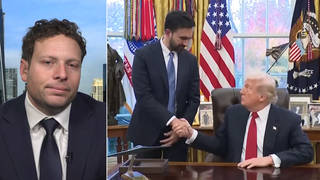
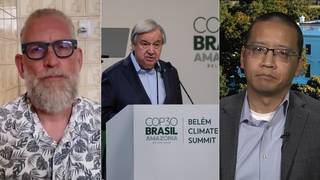
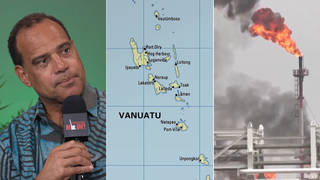
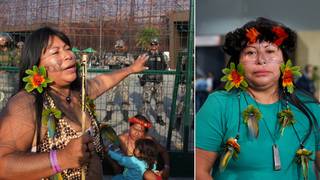





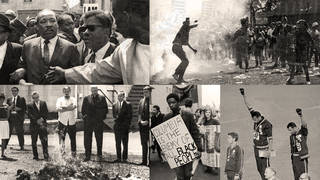
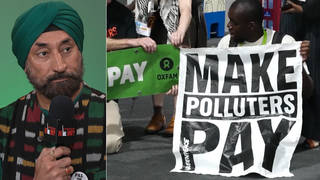
Media Options